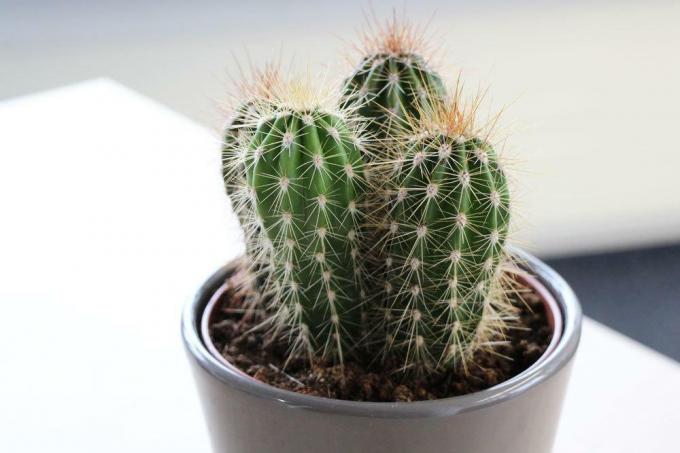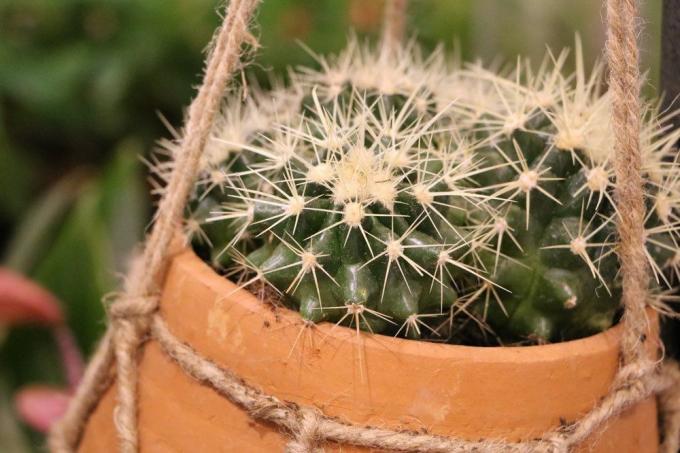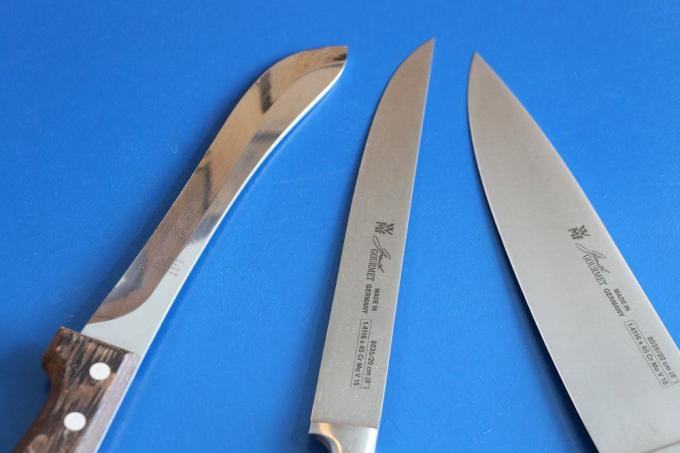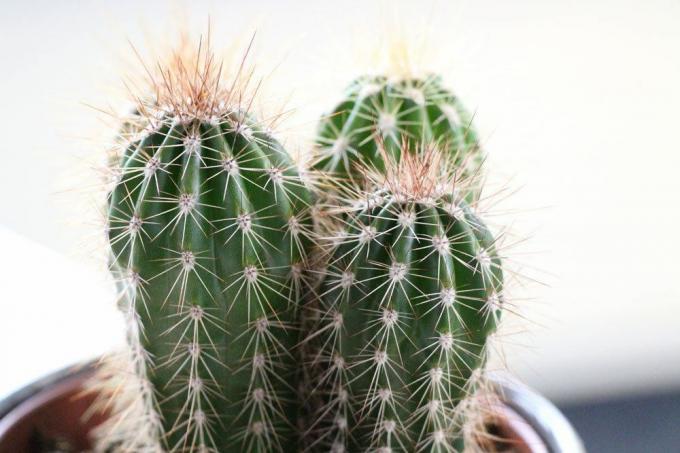
table of contents
- Multiply
- Cuttings
- Head cuttings
- Leaf cuttings
- Kindel
- Offshoot
- Cutting tool
- Make a cut
- Planting
- Protective measures
Cacti come in a wide variety of forms. Once you have taken a liking to your spiky friends, you often can't get enough of them. And you quickly start growing cacti without really planning it. The easiest way to propagate is with offshoots, cuttings or children and a little patience. But be careful: protect your hands from the spines!
Multiply
Cacti can be propagated with seeds, cuttings or cuttings. The simplest form of propagation is with cuttings and cuttings. The prickly friends are excellent for breeding with both.
Tip: With many types of cacti, broken parts can also be replanted. To do this, follow the instructions below.
Cuttings
Propagation with cuttings
In this form of propagation, side shoots are separated from the mother plant and then planted in a new pot. Hygiene is particularly important when propagating through cuttings, because cutting off the cuttings leads to cuts in which bacteria tend to nestle. The best time to propagate with cuttings is between April and June.
Tip: Do not cut the cutting from young shoots. The mother plant can cope better with the cut on a one-year-old or older shoot.

Head cuttings
Head cuttings can also be used for propagation. A head cutting is obtained when the cactus is shortened, ie when the "head" is cut off. The further process of propagation is the same as with cuttings from side shoots.
Leaf cuttings
Cacti are not all round in shape. So-called. Leaf cacti develop fleshy leaves that you can use for propagation. They are always cut at the bottom of the sheet.
Kindel
The Kindel is a cactus offshoot that grows naturally. Kindeln look like the mother plants, but are much smaller, like a mini version of the mother. They are carefully twisted off the mother plant. If children grow as a cushion, you can also stay with the mother plant.
Offshoot
Propagating cacti with offshoots is easy. An offshoot is understood to mean young cacti that grow next to the mother plant. So an increase can only take place when one or more of them are present. The right time has come when the young cactus plant has reached a size of five centimeters. However, this is only a rough guide. In the case of smaller cacti, however, it can be removed earlier. It is also removed earlier when there is little or no space in the pot. In the case of large cactus plants or in the case of a lot of unrooted substrate, the removal can also be delayed.
Tip: The “baby cactus” does not necessarily have to be separated from the mother plant. If young and old plants stay together, you should repot them in a larger container. You can also grow cacti to save space. And the different sizes also look very nice in the pot.

Instructions for propagating with cuttings:
- Carefully lift the cactus out of the pot
- Completely remove the roots from the substrate (if necessary, carefully shower the roots)
- Cut off the "baby cactus" with a sharp knife
- Pay attention to a smooth cut
- Let cuts dry in a warm, dry place
- Place mother and daughter plants separately in fresh substrate
- Planting depth: same depth as before removal
- If necessary, stabilize young cacti with chopsticks
- supply with water from below
Tip: Once the offshoots have reached a certain size, they can often be separated from the mother plant without cutting.
Cutting tool
You should always use a knife and not scissors for propagation with cuttings. The knife has to be clean, disinfected and sharp. It is best to cut the cutting off with a scalpel. At a Columnar cactus A hand saw or fretsaw may also be used.

You will also need:
- candle
- Aluminum foil
- matches
Tip: You can use spirit or alcohol to disinfect.
Preparation, cutting and follow-up treatment
Before making the cut, the knife must be heated. To do this, light the candle and wrap the aluminum foil around the knife. Hold that packaged knife over the candle flame. If the aluminum foil begins to turn black, it is removed by the knife. Now you can cut the offshoot.
If the offshoot has been taken, place the knife together with the aluminum foil briefly on the interface of the mother cactus. Don't be frightened if something hisses. This process closes the interface and ensures that the cactus does not bleed to death or bacteria can lodge. From the mother plant's point of view, reproduction is now complete.
Make a cut
Do not start the cut in a narrow spot or on the lower part of the cactus. It is best to have a place in the middle of the cactus that is nice and wide. For you the cut quickly and in one piece. That way it will be nice and smooth. Under no circumstances should you saw around the plants or squeeze the shoot. This leads to messy cuts that can lead to rot. If a cut fails, sharpen the knife immediately and repeat the cut below the pinch.
Size of the small cacti:
- the cuttings should be five to ten centimeters long
- spherical varieties have a greater height than the diameter
- Leaf cuttings and children are separated from the mother plant in their original size
Planting
The cuttings taken do not come into the soil immediately after they have been cut. To stop the (milk) juice from flowing out, dab the interface with kitchen paper. Let the cuttings air dry upright for a few days. So that they root better, you can cut the cuttings to a point at the lower end.
Tip: It is best to place the cuttings in a small clay pot for rooting.
Before the cutting is planted, the substrate must be made sterile, because the young one The cactus is not yet as vigorous as the mother plant and needs protection from bacteria and rot will. Potting soil or a special substrate for cacti is suitable as a substrate for the cuttings. Make sure that the substrate is loose and permeable.

Tip: To keep the substrate free of bacteria, heat it in the oven or microwave. The substrate must be cooled down again before it can be used again.
If roots have formed, i.e. the first rooting has taken place, or if the cut surfaces are well dried, the cuttings can be placed in a clean pot. Place the pot on a coaster and pour in the substrate. Slightly moisten the substrate in the pot.
Now the cutting is added:
- Insert the cuttings upright into the substrate
- Planting depth: 1 centimeter
- do not water in the first week
- do not pour
- no blazing sun
- bright and warm location ideal
- Fresh air is tolerated
- Always keep the substrate slightly moist
- Give water from below
Tip: To keep the young cactus upright, you can stabilize it with chopsticks, for example with matches.
After four weeks, the young cacti should have rooted. You can check this as follows: Gently pull out stabilizing swabs. If the cactus stops, it is rooted. Now the watering can be slowly reduced. The little cactus can now also leave the nursery and move to the mother plants.

Protective measures
The spines of cacti shouldn't be underestimated. They can dig into skin and cause pain and inflammation. Pure protection with gloves is in many cases ineffective, as the spines can also pierce through gloves. Coated tongs or several layers of aluminum foil protect against the spikes. You can also protect yourself from the spikes with styrofoam sheets. When all cacti are multiplied, you should clean the work surface and the floor thoroughly so that you do not get a sting in after all.
Tip: With larger cacti, you should definitely protect your arms and legs from the spines



